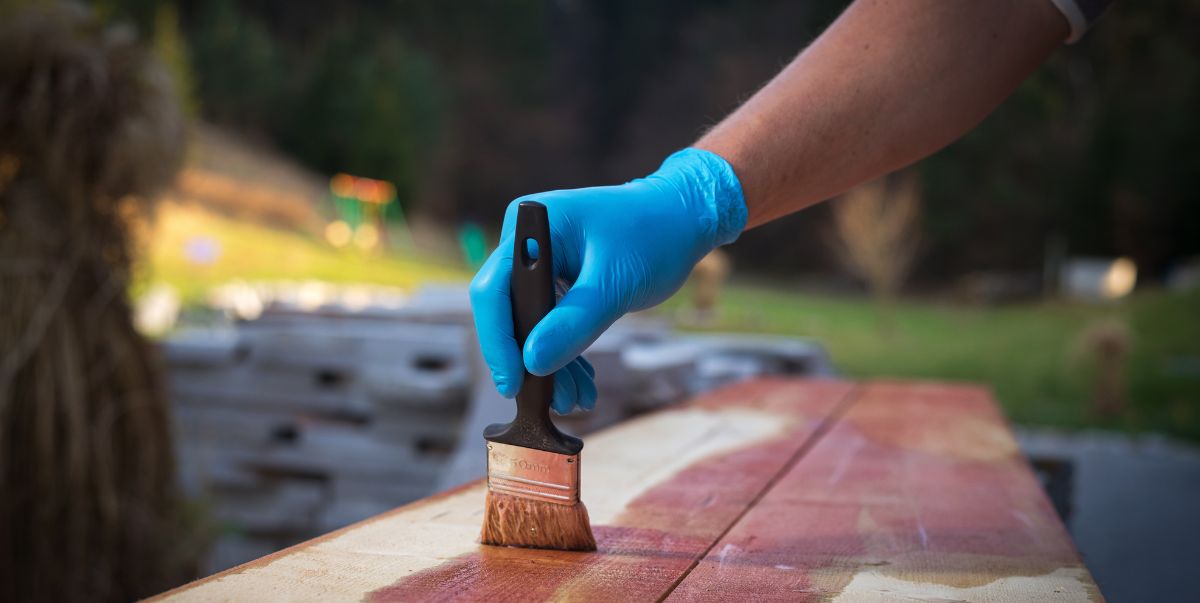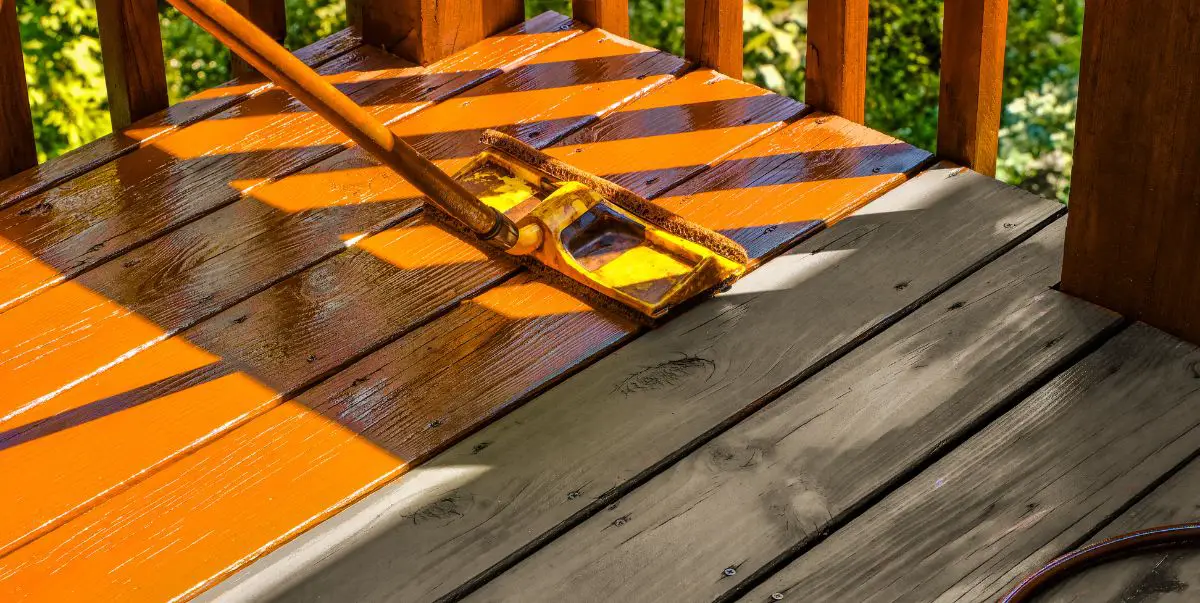Yes, a second coat of stain is necessary for optimal results. Applying a second coat ensures even coverage, deepens the color, and enhances the durability of the stain.
Adding a second coat also helps to hide any imperfections or inconsistencies in the first coat, resulting in a more professional-looking finish. Whether you are staining wood furniture, floors, or outdoor structures, investing the time and effort in applying a second coat will greatly enhance the overall appearance and longevity of the stain.
Additionally, allowing the first coat to dry thoroughly before applying the second coat is crucial for achieving the best results.
The Importance Of Applying A Second Coat
When staining wood surfaces, many DIY enthusiasts and professionals often debate whether applying a second coat of stain is necessary. While it may seem tempting to skip this step to save time and effort, the truth is that a second coat of stain can significantly enhance the overall quality and longevity of your project. In this section, we will explore the importance of applying a second coat and the benefits it offers.
Enhanced Color And Depth
One of the key reasons why applying a second coat of stain is important is the enhanced color and depth it provides to the wood. The first coat of stain often acts as a base layer, penetrating the wood and providing a foundation of color. However, applying a second coat allows for more vibrant and richer hues to emerge, resulting in a visually stunning appearance.
With a second coat of stain, the wood’s natural grain is emphasized, giving it a beautiful and organic look. The additional layer of stain adds depth to the color, making it appear more dynamic and attractive. Your wooden furniture, deck, or other stained surfaces will stand out and become a focal point, adding charm and character to any space. So, whether you’re refinishing an old piece or starting a new project, a second coat of stain is beneficial in achieving the desired visual impact.
Improved Durability
Besides enhancing the aesthetics, applying a second coat of stain also contributes to the overall durability of the wood surface. The second coat acts as a protective barrier, ensuring that the wood is shielded from potential damage caused by everyday wear and tear.
The additional layer of stain provides an extra level of protection against moisture, sunlight, and other environmental factors that can cause the wood to deteriorate over time. It creates a barrier that helps prevent the wood from absorbing water and forming unsightly splinters or cracks. Additionally, the added layer of stain helps guard against fading, allowing the wood to maintain its original color for a longer period.
Another advantage of the second coat is that it improves the overall resistance to stains and scratches. By providing an extra layer of protection, the wood is less likely to show signs of wear and damage. This is especially important for high-traffic areas or outdoor structures that are exposed to constant use and weather conditions. With a second coat of stain, you can enjoy your stained wood surfaces with peace of mind, knowing they are more durable and can withstand the test of time.
In conclusion, while it may be tempting to skip the second coat of stain, doing so would mean missing out on the additional benefits it offers. Adding a second coat not only enhances the color and depth of the wood but also improves its overall durability. So, whether you’re aiming for a stunning finish or long-lasting protection, applying that second coat of stain is undoubtedly worth the extra effort and time invested.

Tips For Applying A Second Coat
Applying a second coat of stain to your woodwork can make a significant difference in the overall appearance and durability of the finished product. While it may seem like an extra step, taking the time to apply a second coat can enhance the richness of the color, provide a more consistent finish, and create a protective barrier that will extend the life of your wood.
Preparation And Sanding
Before applying a second coat of stain, it is essential to properly prepare the wood surface. This includes sanding the wood to create a smooth and even base. Sanding helps remove any imperfections, such as scratches or rough patches, that may have occurred during the initial staining process. It also helps open up the wood pores, allowing the stain to penetrate deeper, resulting in a richer and more vibrant color.
To prepare the wood surface, start by cleaning off any dirt or dust with a soft cloth or brush. Once the surface is clean, use fine-grit sandpaper to sand the wood in the direction of the grain. Avoid applying excessive pressure, as this can create unevenness. After sanding, wipe away any residue with a tack cloth to ensure a clean surface for the second coat of stain.
Application Techniques
When applying a second coat of stain, it is crucial to use proper application techniques to achieve the best results. Here are a few tips to keep in mind:
- Use a clean and dry brush or cloth to apply the second coat. This will help ensure a smooth and even application.
- Apply the stain in thin, even layers. Avoid applying too much stain at once, as it can lead to uneven colors and pooling.
- Work in small sections, following the direction of the wood grain. This will help prevent blotches and streaks.
- Allow each coat to dry completely before applying the next. This will ensure proper adhesion and prevent the stain from rubbing off or smudging.
- If desired, lightly sand the wood between coats to create a smoother surface and enhance the stain’s absorption.
By following these tips, you can ensure a successful second coat of stain application. Remember, taking the time and effort to apply a second coat can greatly improve the overall finish and longevity of your woodwork.
Common Misconceptions About Second Coats
Common misconceptions about second coats of stain can lead to confusion when it comes to finishing wood projects. In this section, we’ll explore some of these misconceptions and debunk the myths surrounding the necessity of applying a second coat.
Overdarkening Of Wood
One common misconception is that applying a second coat of stain will darken the wood excessively, resulting in an undesirable finish. However, when applied properly, a second coat can actually enhance the color and bring out the natural beauty of the wood, creating a more vibrant and polished appearance.
Waste Of Time And Money
Another misconception is that a second coat of stain is a waste of time and money. In reality, applying a second coat can provide additional protection to the wood, improving its durability and longevity. Additionally, it can help achieve a more uniform and professional-looking finish, making it a worthwhile investment in the overall quality of the project.
Choosing The Right Stain For The Job
Applying a second coat of stain can enhance the durability and depth of color. It also ensures a more even and saturated finish, especially on porous surfaces. However, always follow the recommended drying time to achieve the best results and avoid over-application.
When it comes to staining wood surfaces, choosing the right stain is crucial to achieving the desired look and protection. There are several factors to consider in order to make an informed decision. Understanding the types of stains available and the considerations for selection will help you choose the perfect stain for your project.
Types Of Stains
There are three main types of stains commonly used: water-based stains, oil-based stains, and gel stains. Each type offers its own pros and cons, so it’s important to understand their characteristics before making a choice.
| Type | Characteristics |
|---|---|
| Water-based stains | Quick drying, low odor, easy cleanup, non-toxic. |
| Oil-based stains | Deep penetration, rich color, long-lasting, more difficult cleanup. |
| Gel stains | Thicker consistency, less prone to drips, great for vertical surfaces. |
Considerations For Selection
When selecting a stain, there are a few important considerations to keep in mind:
- Wood type: Different types of wood absorb stain differently. Some woods may require pre-conditioning or a specific type of stain for optimal results.
- Desired color: Stains come in a variety of colors, from light and natural to dark and bold. Consider the desired end result and choose a stain that will achieve the look you want.
- Application method: Different stains require different application methods, such as brushing, wiping, or spraying. Consider your level of experience and the tools you have available.
- Environmental impact: If eco-friendliness is important to you, opt for water-based stains, as they are generally considered more environmentally friendly than their oil-based counterparts.
By considering these factors and understanding the different types of stains available, you can confidently choose the right stain for your project. Remember, it’s always a good idea to test the stain on a small, inconspicuous area before applying it to the entire surface to ensure you achieve the desired look.
Expert Advice For Optimal Results
When it comes to staining wood surfaces, achieving optimal results is the ultimate goal. And while applying a single coat of stain may seem like the most straightforward method, considering a second coat can make a significant difference in the outcome. To help you make the right decision, we’ve gathered expert advice on when to apply a second coat of stain, as well as the importance of sealing and finishing for optimal results. Read on to discover the secrets of achieving a beautifully stained wood surface that will stand the test of time.
Timing Of Application
Timing is crucial when it comes to applying a second coat of stain. It’s important to note that applying a second coat too soon can result in a sticky, uneven finish. On the other hand, waiting too long may require additional surface preparation. To ensure an even application and proper absorption of the stain, follow these expert tips:
- Before applying a second coat, allow the first coat to dry completely. This typically takes around 24 hours, but it’s recommended to check the label instructions for specific drying times.
- Perform a touch test to determine if the first coat is dry. Gently touch a small inconspicuous area of the stained surface. If it feels tacky or sticky, it’s not ready for a second coat. Wait a few more hours and perform the touch test again.
- If the touch test indicates that the first coat is dry, lightly sand the surface with fine-grit sandpaper to create a smooth and uniform texture. Wipe away any dust particles before proceeding with the second coat.
- Apply the second coat of stain using the same method as the first, ensuring even coverage and avoiding excess pooling. Allow the second coat to dry completely before proceeding with sealing and finishing.
Sealing And Finishing
While a second coat of stain enhances the depth and richness of the color, sealing and finishing are equally important for long-lasting, durable results. Here’s why:
- Sealing the stained surface helps protect it from moisture, UV rays, and other environmental factors that can cause discoloration or damage over time.
- Finishing the surface provides an extra layer of protection, enhances the natural beauty of the wood, and adds a smooth, satin, or glossy finish.
To seal and finish your stained wood surface, follow these expert recommendations:
- Choose a high-quality clear sealer or topcoat that is compatible with your stain. Read the manufacturer’s instructions carefully before application.
- Apply the sealer or topcoat using a brush, roller, or sprayer, following the recommended application guidelines. Ensure even and complete coverage.
- Allow the sealer or topcoat to dry according to the label instructions. This usually takes a few hours to overnight.
- If desired, lightly sand the dried surface between coats of sealer or topcoat to create a smooth finish. Remove any dust before applying subsequent coats.
- Apply multiple coats of sealer or topcoat as recommended by the manufacturer, allowing each coat to dry completely before applying the next.
By following these expert tips on timing of application, sealing, and finishing, you’ll achieve optimal results when staining your wood surfaces. Investing a little extra time and effort will ensure a beautifully stained surface that not only looks stunning but also remains protected for years to come.

Frequently Asked Questions Of Is A Second Coat Of Stain Necessary
Should I Apply A Second Coat Of Stain?
Applying a second coat of stain is recommended for a more even and durable finish. It helps enhance the color and depth of the wood, providing better protection against wear and tear. Make sure to properly prepare the surface and allow sufficient drying time between coats for best results.
Will Two Coats Of Stain Make It Darker?
Yes, applying two coats of stain will make the color darker.
How Long Is Too Long Between Coats Of Stain?
Wait for the first coat to dry completely, usually 24-48 hours, before applying the second coat of stain. Applying a second coat too soon can lead to uneven color and adhesion issues. Always follow the product instructions for the best results.
Can You Put Too Many Coats Of Stain On Wood?
Applying excessive coats of stain to wood can lead to issues. It may result in a darker and uneven color, and the wood might not absorb the stain properly. Too many coats can also cause the wood to become sticky or have a glossy finish, which may not be desired.
It’s important to follow the instructions and apply a suitable number of coats for the best results.
Conclusion
Deciding whether to apply a second coat of stain depends on various factors. Understanding the type of wood, desired color intensity, and the level of protection required are essential in making this decision. Ultimately, the choice for a second coat of stain should be based on what will achieve the best results for your specific project.


